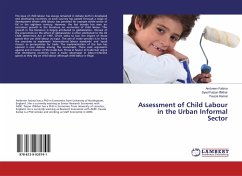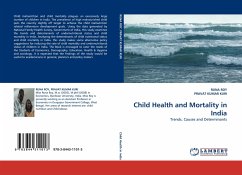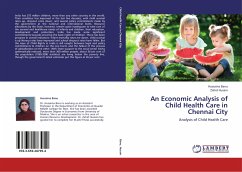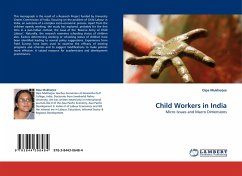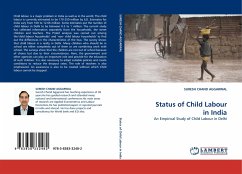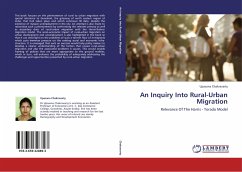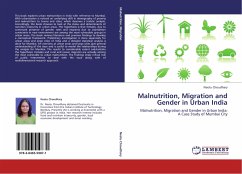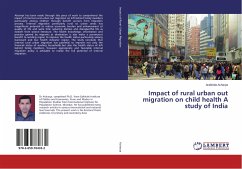
Impact of rural urban out migration on child health A study of India
Versandkostenfrei!
Versandfertig in 6-10 Tagen
58,99 €
inkl. MwSt.

PAYBACK Punkte
29 °P sammeln!
Attempt has been made through this piece of work to comprehend the impact of internal rural urban out migration on left behind family members particularly among children through benefit accrues from migration process. Internal migration particularly rural to urban areas has magnificent potential to reduce economic burden and enhancement of quality of life and same time reducing distress and disrespectful life as evident from several literature. The health knowledge, information and practice gained by migrants at destination is also make a paramount benefit to sending region to improve the heal...
Attempt has been made through this piece of work to comprehend the impact of internal rural urban out migration on left behind family members particularly among children through benefit accrues from migration process. Internal migration particularly rural to urban areas has magnificent potential to reduce economic burden and enhancement of quality of life and same time reducing distress and disrespectful life as evident from several literature. The health knowledge, information and practice gained by migrants at destination is also make a paramount benefit to sending region to improve the health status particularly among backward and low health indicator region. The study conclude that internal rural urban migration has potential to improve not only the financial status of sending households but also the health status of left behind family members, however appropriate and favorable internal migration policy is advisable to realise the full potential of internal migration.



